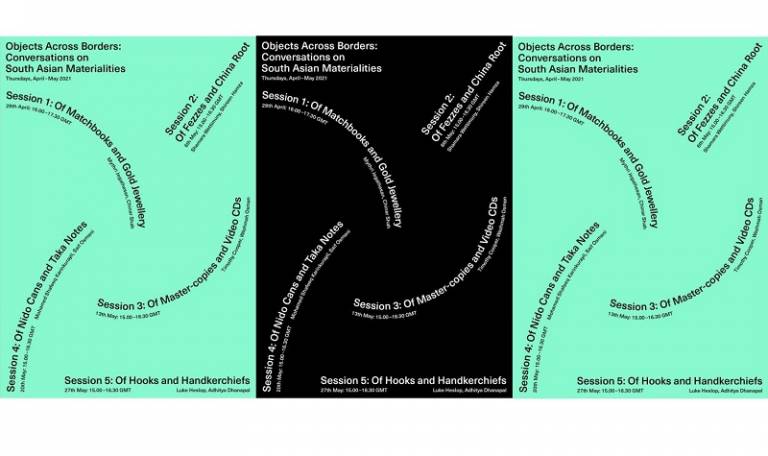VIRTUAL CSSA: Of Fezzes and China Root
06 May 2021, 3:00 pm–4:00 pm

'Part of the 'Objects Across Borders' series, reflecting on the stories embedded in visual and material artefacts, we are pleased to present Shamara Wettimuny and Shireen Hamza.
This event is free.
Event Information
Open to
- All
Cost
- Free
Organiser
-
Centre for the Study of South Asia and the Indian Ocean World
Shamara Wettimuny
Object: Fez cap
In December 1905, around 30,000 Muslims gathered in the grounds of the Maradana mosque in Colombo in the most significant episode of pan- Islamic solidarity during British rule in Ceylon. What had triggered this ‘monster meeting’ as it was dubbed in the press? In this talk, I analyse a British colonial decision that threatened Muslim identity in Ceylon: the prohibition of the ‘fez cap’ in Courts in 1905. The fez cap had only been introduced to Ceylon as a symbol of Islamic religiosity as recently as 1883. How and why had it come to be termed the
Muslims’ ‘national headgear’ in just two decades? I investigate the value placed on material, bodily markers of identity in the context of an Islamic revival, and explore the relationship between the Ottoman Sultan, who was considered by many Sunni Muslims the ‘Caliph of Islam’, and the Muslims of Ceylon.
Shireen Hamza
Object :chūb chīnī, China root
The seventeeth century explosion of commodified materia medica has been studied by historians of European empire – including china root, known as a treatment for syphilis. But how were these medical commodities understood by practitioners of non-European medicine? I followed the traces of chūb chīnī, or china root, across Persian medical treatises and pharmacopeia, and found a keen interest in the origin, properties and applications of this root among practitioners of “Islamic medicine”, or tibb. Their interest manifested differently than
those of their European contemporaries, though they mostly shared a Galenic medical paradigm. Decentering the (European-language) documents that attest to the purchase, cultivation or circulation of concrete quantities of china root, I highlight the affective and epistemic aspects of chūb chīnī’s histories in Persianate contexts. Through video and prose, I hope to share these resonances, for a hakim in eighteenth-century Murshidabad, patients across the Indian Ocean ecumene, and for researchers today.
Part of the Objects Across Borders series, bringing together scholars and creative practitioners working in and on South Asia to reflect on the stories embedded in visual and material artefacts. This series is organised by Vindhya Buthpitiya (UCL) and Mallika Leuzinger (Princeton) and hosted by the UCL Centre for the Study of South Asia and the Indian Ocean World, and The Fung Global Fellows Program and Program in South Asian Studies at Princeton University.
About the Speakers
Shamara Wettimuny
Doctoral candidate in History at University of Oxford
She is researching identity formation and religious conflict in British colonial Ceylon (now Sri Lanka). She has a MSc and a BSc in International Relations and History from the London School of Economics and Political Science.
More about Shamara WettimunyShireen Hamza
Doctoral student at Harvard University
She is researching the history of science and medicine in the medieval Islamic world, with a focus on the Indian Ocean littoral. She is also managing editor of the Ottoman History Podcast.
More about Shireen Hamza Close
Close

